Inspiring Germany
Interesting facts about Germany
You think you know a lot about Germany? We present you with facts that are guaranteed to surprise you.
A quick bite in the Middle Ages – or the invention of fast food in Germany
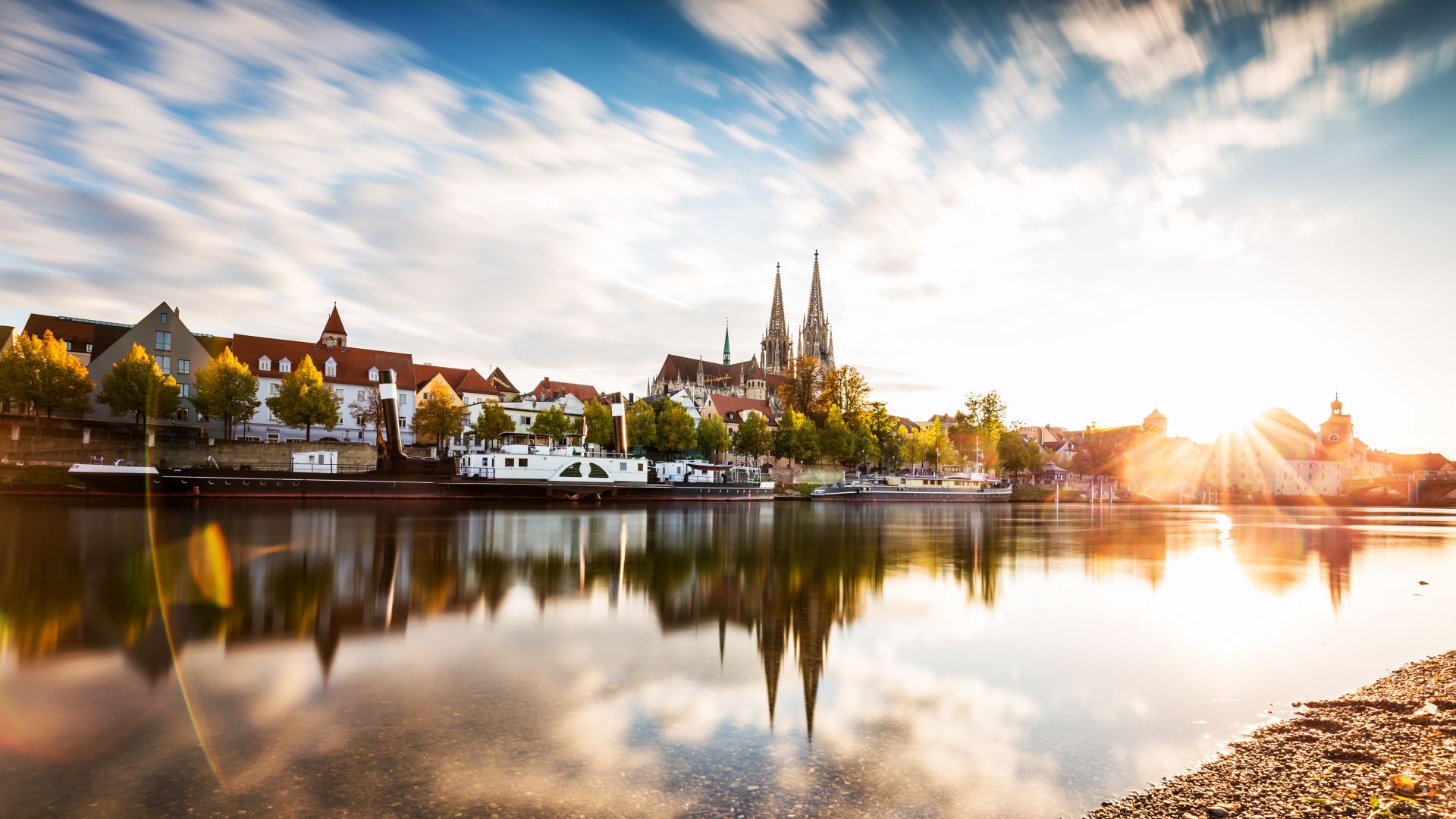
Good old Europe! Now it's even claiming an American institution as its own invention. At the very least this claim involves a nice little story set in the Bavarian city of Regensburg.
Located along the banks of the Danube River, this little gem is home to Medieval architecture so stunning that its perfectly preserved Old Town has been named a UNESCO World Heritage Site. The Stone Bridge is believed to be the oldest bridge still standing in Germany, whilst the cathedral has the honour of being considered one of the country's most significant Gothic sacred buildings along with Cologne Cathedral.
Just a stone's throw away from the bridge stands a culinary relic of sorts that has been described as "the oldest fast food joint in the world". A café, now known as the "Sausage Kitchen", is said to have opened on that very spot in 1146, just as the bridge was completed.
It is believed that the workers building the cathedral would have stopped off here for a quick snack of boiled meat. And now hungry folk can head here to pick up traditional local grilled sausages along with sauerkraut and mustard. It's certainly a big hit with international tourists.
It's all about the... Bratwurst sausage. An edible German icon

Bratwurst sausages have come to be symbolic of Germany. According to statistics from the German Butchers' Association, the Germans consume the equivalent of around three kilos of them per person every year. And yet they did not actually originate in Germany. But whilst the Ancient Greeks may have grilled sausages over glowing charcoal, it was the Germans that adopted the sausage as an edible part of their cultural heritage.
The Thuringian and Nuremberg Bratwurst sausages have protected geographical indication status, whilst the Coburg take is renowned in its own right. Not forgetting Hesse, where there are plenty of tasty recipes from east to west. The word "Bratwurst" has even been assimilated into the English language (although the pronunciation may not be quite the same). "The Bratwurst sausage is our top speciality and we are known for it the whole world over" – that's something they're confident about over at the first German Bratwurst Museum in Mühlhausen, Thuringia.
A standard Bratwurst sausage will usually be around 20 centimetres long, but a butcher in Nuremberg is said to have created an ultra-long one measuring in at 39 metres back in 1591. The current record, though, was set in 1999, when a team of butchers in Landshut combined sausage meat from 30 pigs in a barn that had been transformed for the occasion. Museum data tells us that the sausage ended up boasting a length of 5,888 metres.
Berlin from space – the German divide is still illuminated at night
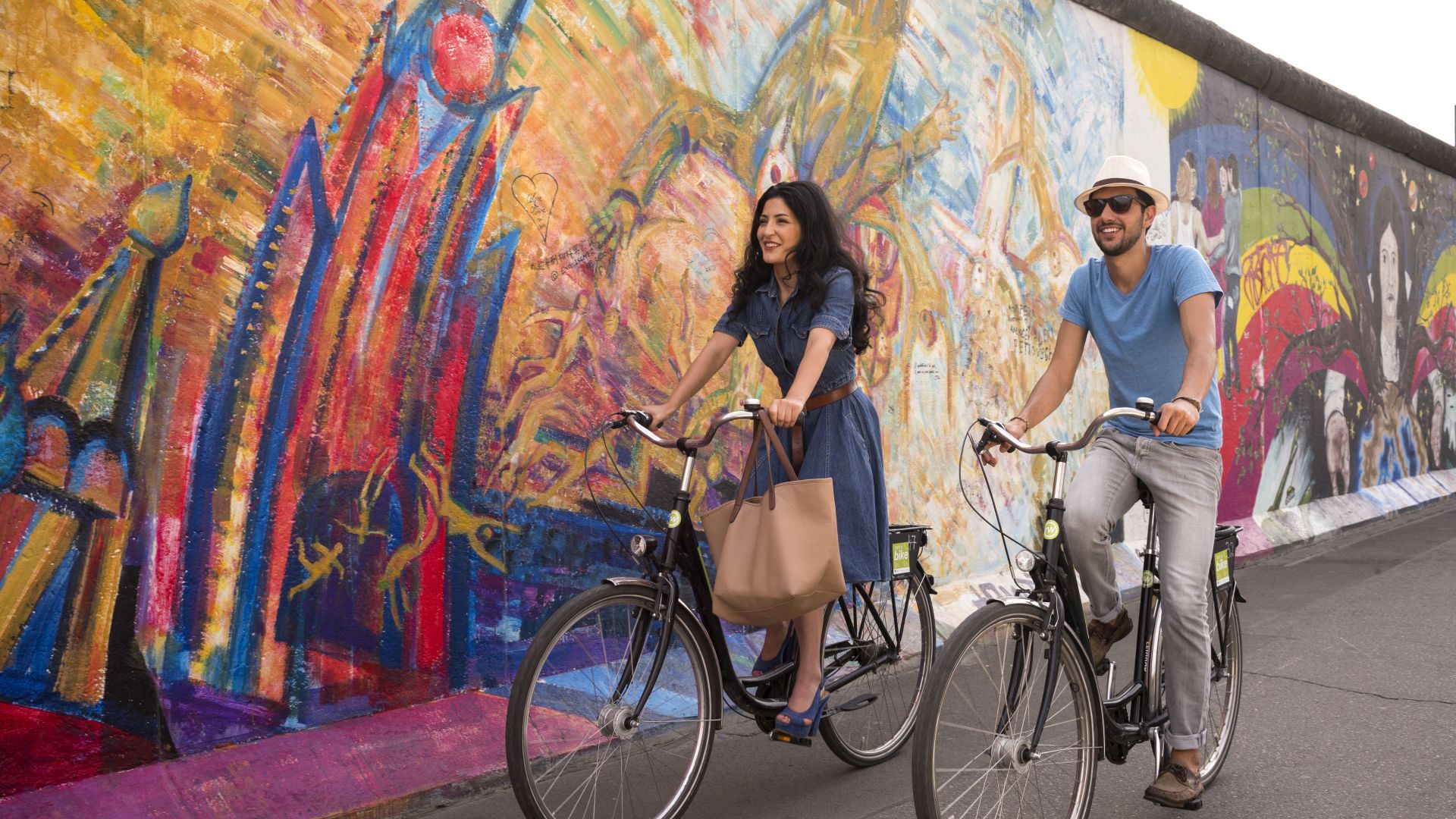
Berlin has come to be an increasingly united city since the fall of the wall in 1989. Tourists can cross the former border without giving it a second thought and cyclists casually cruise along the Berlin Wall Trail. And yet if you look down at Berlin from space on a clear night, you'll see that it is still divided in one sense. Satellite images reveal that the west of the city glows in a blue-white light, whilst the east has a warmer yellow shine to it.
This journey back in time from space is the result of different lighting systems, which extend to the streetlights. There are lots of sodium-vapour lamps in the east, whilst mercury-vapour lamps and fluorescent tubes often light the way on the western side of Berlin.
The primeval forest reborn – not everything has to be perfectly in order
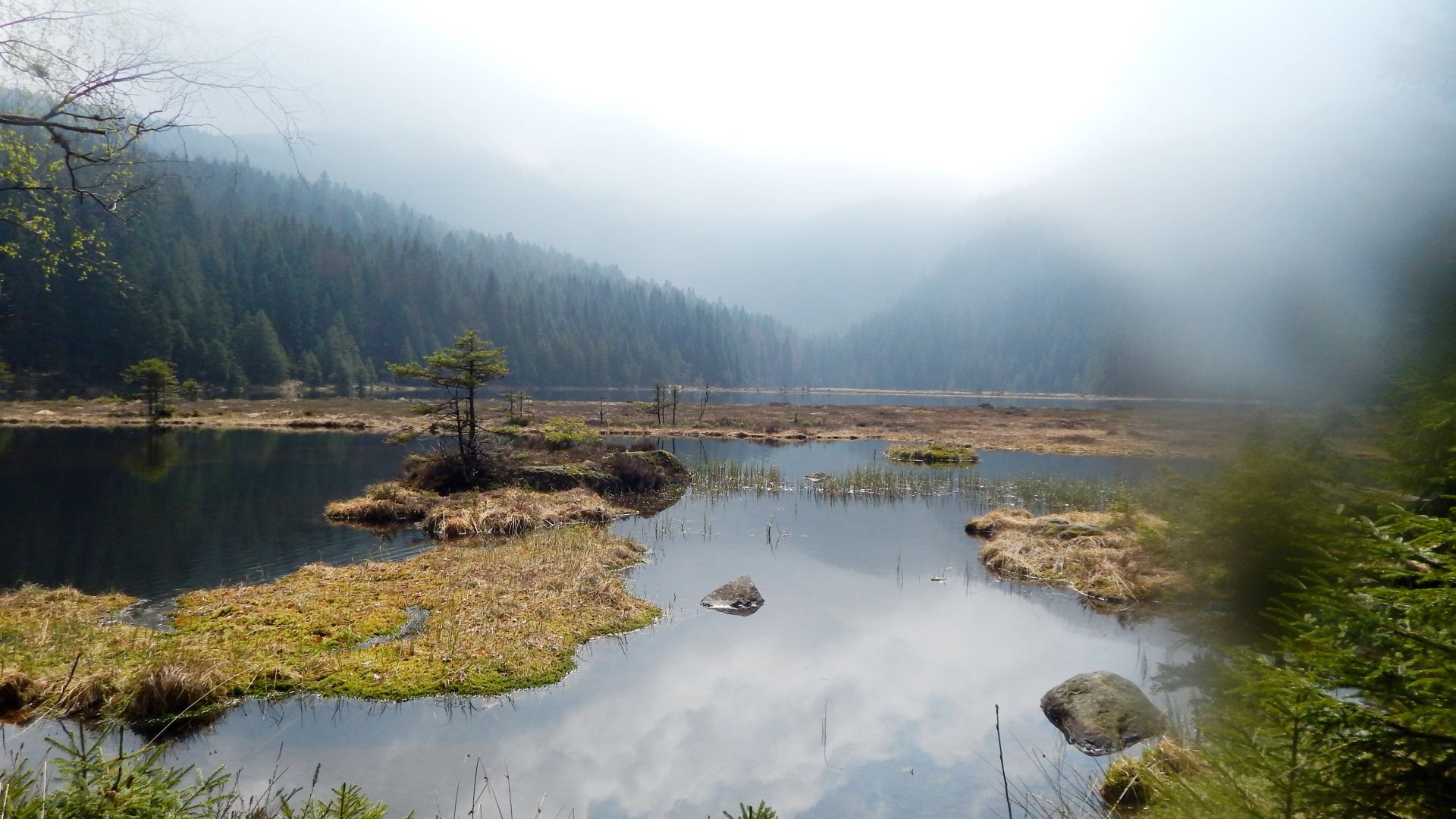
About a third of Germany is covered with forests, which is a high proportion given that it is such a densely populated industrialised country. Would you really expect to find a primeval forest here? Probably not!
And yet there is one in the Bavarian Forest National Park. A large area of forest just a two-hour drive to the north-east of Munich has been left to grow naturally without any human interference for decades. It was back in 1983 that the Bavarian State Minister for Agriculture and Forestry, Hans Eisenmann, decided to just leave trees that had been blown over in a storm. The plan is to create a "primeval forest for our children and their children down the line" in the National Park.
Combined with the adjoining Šumava National Park on the Czech side of the border, the Bavarian Forest National Park is the largest highly protected forest reserve in Central Europe. The park management team hosts walking tours through the primeval forest that has been allowed to grow naturally once more. Similarly, Sababurg Primeval Forest, part of the Reinhardswald Nature Park in Hesse right at the heart of Germany, hasn't been interfered with for more than 100 years now.
A home on the move – the modern caravan, another German invention
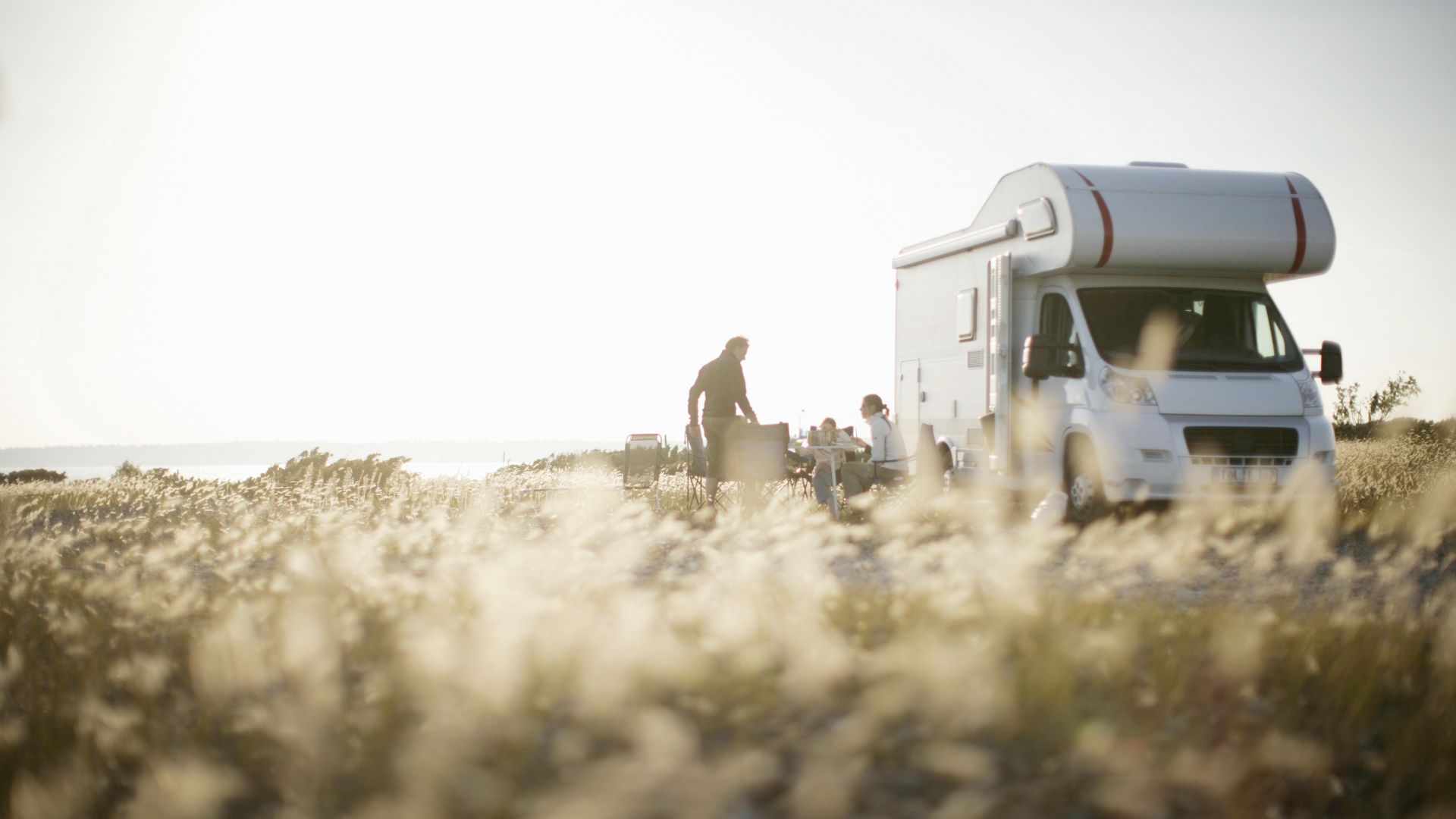
Luxurious caravan-style trailers may have been used to transport horses and oxen across England in the 19th century, but the caravans that modern campers tow behind their cars all around the world originated in Germany.
At the start of the 1930s, Swabian Arist Dethleffs, the son of a whip manufacturer, and his artist fiancée Fridel Edelmann came up with the idea of creating a mobile workshop. They ended up inventing a single-axle caravan covered in wooden cladding and complete with a bunk, seating area and kitchen inside. Whilst this model may not have been suitable for camping holidays, the idea was born.
Some 700,000 caravans are registered right now in Germany alone and they are growing in popularity. Camping holidays in Germany are all the rage at the moment, too, according to the statistics.
Last but by no means least: Germany is home to 25,000 castles
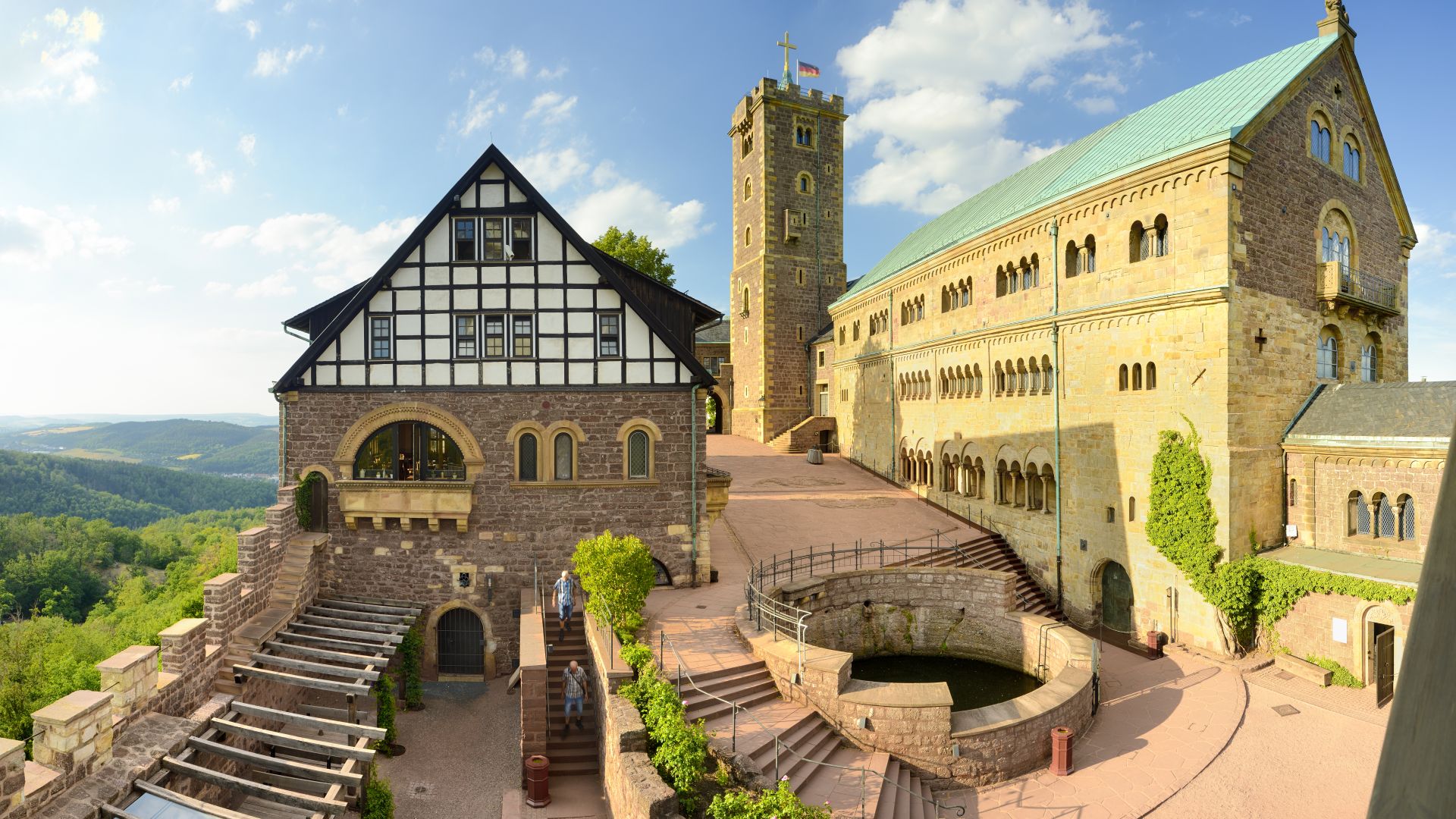
If you love visiting a good castle, you won't be disappointed by the huge selection just waiting to be discovered in Germany. The Thuringian Forest is an excellent place to start if you're looking for something a little different. The most famous castle in the whole of Germany, Wartburg Castle in Eisenach, just so happens to be where reformer Martin Luther produced the first-ever translation of the New Testament in German.
The federal state of Saxony is another castle hotspot, whilst stunning fortresses line the spectacular landscape of the Swabian Alb in south-west Germany. But if it's moated castles you're looking for, a visit to the Münsterland or Lower Rhine regions will be a dream come true. And yet you can't beat the Middle Rhine Valley in the west of Germany when it comes to castle-spotting.
After all, there are 40 well-preserved castles in a row within the space of just 60 kilometres between Bingen and Koblenz. The Upper Middle Rhine Valley has been listed as a UNESCO World Heritage Site since June 2002 – the first German cultural landscape to have this honour.
It is estimated that there are 25,000 castles, as there are no statistics on this to date.
Did you know...? - Germany's surprising facts
Close your eyes and let yourself be acoustically enchanted by the diverse impressions on your journey through Germany!
Intro with music:
“Experience Germany – A Surprising Journey of Discovery”
Welcome to the German capital! Everyone knows the Brandenburg Gate, the Reichstag and the Berlin Wall. But did you know that there are 2,500 bridges in Berlin? Four times more than in Venice. And each one has its charm, says native Berliner Sylvia Teschke.
OST Sylvia Teschke, Berlin: Bridges
Woman: The Oberbaum Bridge that crosses the Spree is simply spectacular at sunset. The Admiral Bridge in Kreuzberg is a meeting point for young people who like to party there in the evenings. The Glienicke Bridge was known as a place where captured spies would be exchanged. There are small bridges towards Spandau and Reinickendorf that are very close to nature: Herons, swans, ducks, there are also beavers in the rivers of Berlin.
Beavers, squirrels and red deer are also native to Saarbrücken, the state capital of Saarland. Birgit Grauvogel from Tourismus Zentrale Saarland explains that this is because there is a primeval forest at the gates of the city, close to the French border.
OST Birgit Grauvogel, Saarland: Primeval forest
Woman: A primeval forest is supposed to develop freely without human intervention. Trees are no longer cut down and the fact that it looks so untidy is intentional, even the dead wood, which is left for microorganisms and insects. It is a primeval forest that develops over 10, 20 years, just as it would naturally do at this latitude.
The far north of Germany is also more than just beaches, dikes and lighthouses. Philipp Queiser from Schleswig-Holstein Tourismus even compares the jungle-like landscape around Lübeck with that of the Amazon.
OST Philipp Queiser, Tourismus-Agentur Schleswig-Holstein: Wakenitz
Man: The Wakenitz flows from the Ratzeburge Lake on the right side of the Trave to Lübeck and because of its untouched nature that is like a primeval forest, the small river has come to be called the Amazon of the North. What does it look like? Like the Amazon: You see green all around you and in the middle there is a lot of water. There are no rapids, but instead there are water lilies and irises. There are passages along the Wakenitz that are reminiscent of the swamps of the southern states of the US.
And anyone who thinks the American Space Center in the swamps of Florida is the only center of international space travel has not yet been to Bremen, says Maike Bialek from Wirtschaftsförderung Bremen.
OST Maike Bialek, Bremen: Space travel
Woman: This is where the European part of the International Space Station was assembled – the upper level of the Ariana rocket. We have great companies, some of which you can visit, that research space and create exciting things like small planetary rovers. A rover is a small vehicle that travels around in space on a comet and takes rock samples.
Even the Town Musicians of Bremen wanted to reach for the sky. The largest Trojan horse in the world, however, is in the Hanseatic town of Stendal in the Altmark region, says Barbara Weinert-Nachbagauer from Sachsen-Anhalt Tourismus.
OST Weinert: Trojan horse
Woman: It is built of wood and it is huge: about 16 meters tall, 13 meters long and almost 10 meters wide. You can walk inside and feel like you are in ancient times, entering unknown territory. The Trojan horse stands in the family and children’s park of the Winckelmann Museum and it really is eye-catching.
Visitors should also see the Bergisches Land region up close. Because it is so hilly, the city of Wuppertal, which has a total of 517 stairways, is the city with the most stairways in Germany, explains Silke Dames from Tourismus NRW.
OST Silke Dames, Wuppertal, North Rhine-Westphalia: Stairways
These really capture your attention! For example, there is the Holstein Staircase, an open stairway from the beginning of the 19th century. It is now bright and colorful: the steps were painted blue, pink and green, and it has become a real Instagram pilgrimage point. Another stairway is Tippen-Tappen-Tönchen. It connects the Ölberg and the Luisenviertel districts. It is definitely worth a visit!
These help you get from one point to another without a car. Everyone knows that hikers and cross-country skiers are also welcome in the Thuringian Forest, but Thuringian sports journalist Katja Bauroth has a truly underground secret tip for cyclists in Kamsdorf, a district of Unterwellenborn.
OST Katja Bauroth: Mine for bikers
Woman: There is a disused mine there. Biking fans have the opportunity to ride through the tunnels on mountain bikes or, lately, also electric motorcycles. They can do this, for example, with professional guides and the best equipment. It’s a lot of fun, and I think it’s something very special about Thuringia.
What is very special in Frankfurt am Main is of course the largest German airport, the stock exchange and frankfurters. But few foreign visitors know that the Hessian capital has the newest old town in the world, according to Herbert Lang from Hessen Tourismus.
OST Herbert Lang, Frankfurt: Old/new town
Man: After the Second World War, Frankfurt was very badly destroyed. Until then there was one of the largest and most beautiful half-timbered complexes in Frankfurt, and in the early 2000s the old town was rebuilt. It’s exciting because there are 15 reconstructions that remain true to the original buildings and there are also 20 new buildings, so it’s quite an exciting mix – and that’s why it’s the newest old town in the world.
The old town of Görlitz in Saxony, in contrast, is the largest contiguous landmark area in Germany, with more than 4,000 listed buildings from five different eras, explains Veronika Hiebl from Tourismus Marketing Gesellschaft Sachsen.
OST Veronika Hiebl, Görlitz/Saxony
Woman: The entire city center is a single monument. Many of the tall buildings in the city center, cultural institutions and also department stores are listed buildings and reflect the five different eras spanning centuries. They have been beautifully restored. This is what makes it so fascinating to stroll through the old town of Görlitz.
If you’re looking for a good time after a walk through the city, you’ll find it in Brandenburg. This is because every year the state-recognized resort of Werda-Havel near Potsdam hosts the largest folk festival in the eastern states of Germany. Patrick Kastner from Reiseland Brandenburg invites you to the tree blossom festival.
OST Patrick Kastner, Brandenburg: Tree blossom festival
Man: The Tree Blossom Festival takes place at the start of spring. In Werder this is five days earlier than in the surrounding area, because there is a very mild climate there and the northernmost licensed vineyard in the world. People sit on wooden benches in the orchards and enjoy the many products of the region. You can go on tours by horse-drawn carriage. It is a well-rounded experience, especially because of the beautiful historic old town and its location by the water.
After all, did you know what the city name Werder means? Island on the river.
OUTRO